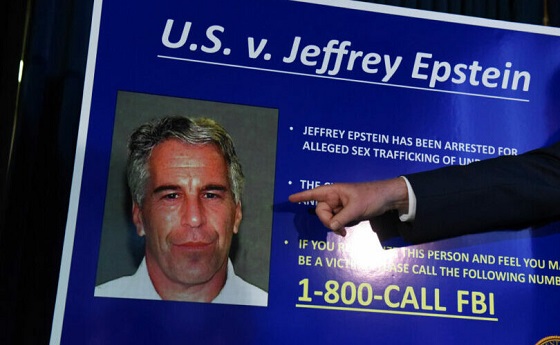Brownstone Institute
iPhone Now Collects Your Mental Health Data

From the Brownstone Institute
By
No data is 100% secure, and this is mental health data. Data that might be extremely embarrassing, career-damaging, or has the potential to disrupt family relationships. Remember, no one knows what new laws, regulations, or more might come to pass years from now.
![]()
True Story: The Health app built into iPhones is now collecting as much personal information on the mental health of each and every one of us as they can get a hold of.
Yet, a search on Google and Brave yielded no results on the dangers of sharing such information over the phone or the internet. Seriously, no single MSM has done an article on why such data sharing might be a bad idea?
To start, in sharing such data, you aren’t just sharing your information; iPhone knows exactly who your family members are. In many cases, those phones are connected via family plans.
iPhone mental health assessments not only ask questions about your mental health but can also infer the mental health status of family members, as demonstrated by the image publicly shared by phone on the benefits of a phone mental health assessment.

What could possibly go wrong?
Although the iPhone has historically been known to keep user data “safe,” this is not a given, and there have been hacks and data breaches over the years.
CrowdStrike happened – from just a simple coding error. In 2015, all of my confidential data given to the DoD and the FBI in order to get a security clearance was harvested by the Chinese government, when they hacked into the government’s “super-secret,” and “super-secure” government data storage site. In response, the government offered me a credit report and monitoring of my credit score for a year. Yeah – thanks.
The bottom line – no data is 100% secure, and this is mental health data. Data that might be extremely embarrassing, career-damaging, or has the potential to disrupt family relationships. Remember, no one knows what new laws, regulations, or more might come to pass years from now. This type of information should not be harvested and stored.
Stay Informed with Brownstone Institute. Sign up for updates.
Furthermore, trusting that Apple will never sell that data or pass it off to research groups is very naive. In fact, mental health data is already being mined.
Apple has partnered with various health organizations and academic institutions to conduct health-related studies, such as Harvard T.H. Chan School of Public Health, Brigham and Women’s Hospital, and the University of Michigan on various health studies. Apple also collaborates with the University of California, Los Angeles (UCLA) on a Digital Mental Health Study. This study likely utilizes data collected through Apple devices to investigate mental health patterns and outcomes. Trusting that the user identifiers have been completely stripped before that data is passed on is a risk that one takes when entering such information into an iPhone.

“Connect with resources.”
So how does Apple benefit? At this time, it appears that Apple is selling advertising of various mental health services by “connecting” services to people’s phones. Apple writes that “These assessments can help users determine their risk level, connect to resources available in their region, and create a PDF to share with their doctor.”
That might mean that if one presses the depressed button in the mental health assessment, Apple will place ads on the search engine for anti-depressants or physicians that prescribe them.
Why would that example be relevant, and which pharmaceutical companies might benefit?
iPhone has developed their mental health assessment with an “educational grant” from Pfizer!

Pfizer manufactures and sells Zoloft, Effexor, Pristiq, and Sinequan formulations. Together the sales revenue for these drugs is in the billions each year:
From 2015 to 2018, 13.2% of American adults reported taking antidepressant medication within the past 30 days, with sertraline (Zoloft) being one of the most common. Even off-patent, there were 39.2 million prescriptions filled with an annual sales revenue of 470 million.
Effexor XR is an antidepressant medication that was originally developed by Wyeth (now part of Pfizer). In 2010, when the first generic version of Effexor XR was introduced in the United States, the brand name product had annual sales of approximately $2.75 billion. By 2013, due to generic competition, Pfizer’s sales of Effexor XR dropped to $440 million.
According to IMS Health data, in 2016, Pristiq (desvenlafaxine) had annual sales of approximately $883 million in the United States, although sales appear to have fluctuated over the years.
The bottom line is that Pfizer is not supplying educational grants to develop mental health assessment software for Apple out of the “goodness of their heart.” Mental health inventions via medication are a big business, and these companies are looking to profit.
This is just one way that Apple is using surveillance capitalism by data mining mental health status and then selling access to that data to Big Pharma, Big Tech, physician and insurance companies, etc.
How this information, which once released or leaked, can never be returned with privacies intact, will be used in the future is unknown.
If the setting for sharing research on health conditions has not been deactivated, this information will go into a database somewhere. It is only Apple’s assurance that your identification has been stripped from the data. Further, your mental health information will be uploaded to the cloud and will be used as a behavioral future. To be shared, packaged, sold, used to influence your decision-making, etc.
I am wary of the highly profitable industry that has been built up around “mental disorders.” Over the years, the American Psychiatric Association and the fields of psychology and psychiatry have hurt individuals and families by both classifying diseases and disorders incorrectly and by developing treatments and therapies that were and are dangerous. Many are still in use. Here are a few examples:
- There are estimates that 50,000 lobotomies were performed in the United States, with most occurring between 1949 and 1952. In 1949, the Nobel Prize in Physiology or Medicine was awarded to António Egas Moniz for his development of the lobotomy procedure.
- Homosexuality was classified as a mental disorder in 1952 with the publication of the first Diagnostic and Statistical Manual of Mental Disorders (DSM-I) by the American Psychiatric Association (APA). It was listed under “sociopathic personality disturbance.” This classification remained in place until 1973.
- Selective Serotonin Reuptake Inhibitors (SSRIs) are a widely prescribed class of antidepressant medications. There is a link between SSRIs and increased risk of violent crime convictions, and other research has shown an increase in self-harm and aggression in children and adolescents taking SSRIs.
- The APA supports access to affirming and supportive treatment for “transgendered” children, including mental health services, puberty suppression and medical transition support.
- The APA believes that gender identity develops in early childhood, and some children may not identify with their assigned sex at birth.
- Asperger’s syndrome was merged into the broader category of autism spectrum disorder (ASD) in the DSM-5 in 2013. Since then, a large number of people have faced discrimination and barriers to entry into higher-paying positions. Children handed such a diagnosis also can suffer a lack of confidence in their ability to manage relationships effectively, which can easily carry on to adulthood.
These are just a few of the many, many ways the American Psychiatric Association and the fields of psychology and psychiatry have gotten things very wrong.
- A survey of more than 500 social and personality psychologists published in 2012 found that only 6 percent identified as conservative overall, implying that 94% were liberal or moderate.
- At a 2011 Society for Personality and Social Psychology annual meeting, when attendees were asked to identify their political views, only three hands out of about a thousand went up for “conservative” or on the right.
The liberal bias in psychology influences findings on conservative behaviors.
To bring this back to the use of software applications and the iPhone mental health app in particular, be aware that these software programs are being developed by people with a liberal bias and who will view the beliefs of conservatives negatively. What this means for future use of this data is unknown, but it can’t be good.
If you do choose to use the mental health applications, which mainstream media has nothing but praise for, be aware – there are alligators in those waters.
But sure that the data sharing mode, particularly giving data access to researchers is turned off. But even then, don’t be surprised if your phone begins planting messages about the benefits, SSRIs, or other anti-depressant drugs into your everyday searches. Or maybe your alcohol use or tobacco use data will be used to supply you with advertisements on the latest ways to reduce intake or how to find a good mental health facility. These messages may very well include neuro-linguistic programming methods and nudging, to push you into treatment modalities. But honestly, it is all for your “own good and for the benefit of your family.”

Now, the iPhone and the watch can be valuable tools. The EKG, blood oxygen, and heart rate monitoring are fantastic tools for those who suffer from cardiac disorders. I have found them to be extremely helpful.
My wife, Jill is often motivated by getting more walking steps each week via her iWatch tracker.
Just be aware that these programs can be invasive. Data is never 100% secure and it is being used. We just don’t know all the details.
Republished from the author’s Substack
Brownstone Institute
FDA Exposed: Hundreds of Drugs Approved without Proof They Work

From the Brownstone Institute
By
The US Food and Drug Administration (FDA) has approved hundreds of drugs without proof that they work—and in some cases, despite evidence that they cause harm.
That’s the finding of a blistering two-year investigation by medical journalists Jeanne Lenzer and Shannon Brownlee, published by The Lever.
Reviewing more than 400 drug approvals between 2013 and 2022, the authors found the agency repeatedly ignored its own scientific standards.
One expert put it bluntly—the FDA’s threshold for evidence “can’t go any lower because it’s already in the dirt.”
A System Built on Weak Evidence
The findings were damning—73% of drugs approved by the FDA during the study period failed to meet all four basic criteria for demonstrating “substantial evidence” of effectiveness.
Those four criteria—presence of a control group, replication in two well-conducted trials, blinding of participants and investigators, and the use of clinical endpoints like symptom relief or extended survival—are supposed to be the bedrock of drug evaluation.
Yet only 28% of drugs met all four criteria—40 drugs met none.
These aren’t obscure technicalities—they are the most basic safeguards to protect patients from ineffective or dangerous treatments.
But under political and industry pressure, the FDA has increasingly abandoned them in favour of speed and so-called “regulatory flexibility.”
Since the early 1990s, the agency has relied heavily on expedited pathways that fast-track drugs to market.
In theory, this balances urgency with scientific rigour. In practice, it has flipped the process. Companies can now get drugs approved before proving that they work, with the promise of follow-up trials later.
But, as Lenzer and Brownlee revealed, “Nearly half of the required follow-up studies are never completed—and those that are often fail to show the drugs work, even while they remain on the market.”
“This represents a seismic shift in FDA regulation that has been quietly accomplished with virtually no awareness by doctors or the public,” they added.
More than half the approvals examined relied on preliminary data—not solid evidence that patients lived longer, felt better, or functioned more effectively.
And even when follow-up studies are conducted, many rely on the same flawed surrogate measures rather than hard clinical outcomes.
The result: a regulatory system where the FDA no longer acts as a gatekeeper—but as a passive observer.
Cancer Drugs: High Stakes, Low Standards
Nowhere is this failure more visible than in oncology.
Only 3 out of 123 cancer drugs approved between 2013 and 2022 met all four of the FDA’s basic scientific standards.
Most—81%—were approved based on surrogate endpoints like tumour shrinkage, without any evidence that they improved survival or quality of life.
Take Copiktra, for example—a drug approved in 2018 for blood cancers. The FDA gave it the green light based on improved “progression-free survival,” a measure of how long a tumour stays stable.
But a review of post-marketing data showed that patients taking Copiktra died 11 months earlier than those on a comparator drug.
It took six years after those studies showed the drug reduced patients’ survival for the FDA to warn the public that Copiktra should not be used as a first- or second-line treatment for certain types of leukaemia and lymphoma, citing “an increased risk of treatment-related mortality.”
Elmiron: Ineffective, Dangerous—And Still on the Market
Another striking case is Elmiron, approved in 1996 for interstitial cystitis—a painful bladder condition.
The FDA authorized it based on “close to zero data,” on the condition that the company conduct a follow-up study to determine whether it actually worked.
That study wasn’t completed for 18 years—and when it was, it showed Elmiron was no better than placebo.
In the meantime, hundreds of patients suffered vision loss or blindness. Others were hospitalized with colitis. Some died.
Yet Elmiron is still on the market today. Doctors continue to prescribe it.
“Hundreds of thousands of patients have been exposed to the drug, and the American Urological Association lists it as the only FDA-approved medication for interstitial cystitis,” Lenzer and Brownlee reported.
“Dangling Approvals” and Regulatory Paralysis
The FDA even has a term—”dangling approvals”—for drugs that remain on the market despite failed or missing follow-up trials.
One notorious case is Avastin, approved in 2008 for metastatic breast cancer.
It was fast-tracked, again, based on ‘progression-free survival.’ But after five clinical trials showed no improvement in overall survival—and raised serious safety concerns—the FDA moved to revoke its approval for metastatic breast cancer.
The backlash was intense.
Drug companies and patient advocacy groups launched a campaign to keep Avastin on the market. FDA staff received violent threats. Police were posted outside the agency’s building.
The fallout was so severe that for more than two decades afterwards, the FDA did not initiate another involuntary drug withdrawal in the face of industry opposition.
Billions Wasted, Thousands Harmed
Between 2018 and 2021, US taxpayers—through Medicare and Medicaid—paid $18 billion for drugs approved under the condition that follow-up studies would be conducted. Many never were.
The cost in lives is even higher.
A 2015 study found that 86% of cancer drugs approved between 2008 and 2012 based on surrogate outcomes showed no evidence that they helped patients live longer.
An estimated 128,000 Americans die each year from the effects of properly prescribed medications—excluding opioid overdoses. That’s more than all deaths from illegal drugs combined.
A 2024 analysis by Danish physician Peter Gøtzsche found that adverse effects from prescription medicines now rank among the top three causes of death globally.
Doctors Misled by the Drug Labels
Despite the scale of the problem, most patients—and most doctors—have no idea.
A 2016 survey published in JAMA asked practising physicians a simple question—what does FDA approval actually mean?
Only 6% got it right.
The rest assumed that it meant the drug had shown clear, clinically meaningful benefits—such as helping patients live longer or feel better—and that the data was statistically sound.
But the FDA requires none of that.
Drugs can be approved based on a single small study, a surrogate endpoint, or marginal statistical findings. Labels are often based on limited data, yet many doctors take them at face value.
Harvard researcher Aaron Kesselheim, who led the survey, said the results were “disappointing, but not entirely surprising,” noting that few doctors are taught about how the FDA’s regulatory process actually works.
Instead, physicians often rely on labels, marketing, or assumptions—believing that if the FDA has authorized a drug, it must be both safe and effective.
But as The Lever investigation shows, that is not a safe assumption.
And without that knowledge, even well-meaning physicians may prescribe drugs that do little good—and cause real harm.
Who Is the FDA Working for?
In interviews with more than 100 experts, patients, and former regulators, Lenzer and Brownlee found widespread concern that the FDA has lost its way.
Many pointed to the agency’s dependence on industry money. A BMJ investigation in 2022 found that user fees now fund two-thirds of the FDA’s drug review budget—raising serious questions about independence.

Yale physician and regulatory expert Reshma Ramachandran said the system is in urgent need of reform.
“We need an agency that’s independent from the industry it regulates and that uses high-quality science to assess the safety and efficacy of new drugs,” she told The Lever. “Without that, we might as well go back to the days of snake oil and patent medicines.”
For now, patients remain unwitting participants in a vast, unspoken experiment—taking drugs that may never have been properly tested, trusting a regulator that too often fails to protect them.
And as Lenzer and Brownlee conclude, that trust is increasingly misplaced.
- Investigative report by Jeanne Lenzer and Shannon Brownlee at The Lever [link]
- Searchable public drug approval database [link]
- See my talk: Failure of Drug Regulation: Declining standards and institutional corruption
Republished from the author’s Substack
Brownstone Institute
Anthony Fauci Gets Demolished by White House in New Covid Update

From the Brownstone Institute
By
Anthony Fauci must be furious.
He spent years proudly being the public face of the country’s response to the Covid-19 pandemic. He did, however, flip-flop on almost every major issue, seamlessly managing to shift his guidance based on current political whims and an enormous desire to coerce behavior.
Nowhere was this more obvious than his dictates on masks. If you recall, in February 2020, Fauci infamously stated on 60 Minutes that masks didn’t work. That they didn’t provide the protection people thought they did, there were gaps in the fit, and wearing masks could actually make things worse by encouraging wearers to touch their face.
Just a few months later, he did a 180, then backtracked by making up a post-hoc justification for his initial remarks. Laughably, Fauci said that he recommended against masks to protect supply for healthcare workers, as if hospitals would ever buy cloth masks on Amazon like the general public.
Later in interviews, he guaranteed that cities or states that listened to his advice would fare better than those that didn’t. Masks would limit Covid transmission so effectively, he believed, that it would be immediately obvious which states had mandates and which didn’t. It was obvious, but not in the way he expected.

And now, finally, after years of being proven wrong, the White House has officially and thoroughly rebuked Fauci in every conceivable way.
White House Covid Page Points Out Fauci’s Duplicitous Guidance
A new White House official page points out, in detail, exactly where Fauci and the public health expert class went wrong on Covid.
It starts by laying out the case for the lab-leak origin of the coronavirus, with explanations of how Fauci and his partners misled the public by obscuring information and evidence. How they used the “FOIA lady” to hide emails, used private communications to avoid scrutiny, and downplayed the conduct of EcoHealth Alliance because they helped fund it.
They roast the World Health Organization for caving to China and attempting to broaden its powers in the aftermath of “abject failure.”
“The WHO’s response to the COVID-19 pandemic was an abject failure because it caved to pressure from the Chinese Communist Party and placed China’s political interests ahead of its international duties. Further, the WHO’s newest effort to solve the problems exacerbated by the COVID-19 pandemic — via a “Pandemic Treaty” — may harm the United States,” the site reads.
Social distancing is criticized, correctly pointing out that Fauci testified that there was no scientific data or evidence to support their specific recommendations.
“The ‘6 feet apart’ social distancing recommendation — which shut down schools and small business across the country — was arbitrary and not based on science. During closed door testimony, Dr. Fauci testified that the guidance ‘sort of just appeared.’”
There’s another section demolishing the extended lockdowns that came into effect in blue states like California, Illinois, and New York. Even the initial lockdown, the “15 Days to Slow the Spread,” was a poorly reasoned policy that had no chance of working; extended closures were immensely harmful with no demonstrable benefit.
“Prolonged lockdowns caused immeasurable harm to not only the American economy, but also to the mental and physical health of Americans, with a particularly negative effect on younger citizens. Rather than prioritizing the protection of the most vulnerable populations, federal and state government policies forced millions of Americans to forgo crucial elements of a healthy and financially sound life,” it says.
Then there’s the good stuff: mask mandates. While there’s plenty more detail that could be added, it’s immensely rewarding to see, finally, the truth on an official White House website. Masks don’t work. There’s no evidence supporting mandates, and public health, especially Fauci, flip-flopped without supporting data.
“There was no conclusive evidence that masks effectively protected Americans from COVID-19. Public health officials flipped-flopped on the efficacy of masks without providing Americans scientific data — causing a massive uptick in public distrust.”
This is inarguably true. There were no new studies or data justifying the flip-flop, just wishful thinking and guessing based on results in Asia. It was an inexcusable, world-changing policy that had no basis in evidence, but was treated as equivalent to gospel truth by a willing media and left-wing politicians.
Over time, the CDC and Fauci relied on ridiculous “studies” that were quickly debunked, anecdotes, and ever-shifting goal posts. Wear one cloth mask turned to wear a surgical mask. That turned into “wear two masks,” then wear an N95, then wear two N95s.
All the while ignoring that jurisdictions that tried “high-quality” mask mandates also failed in spectacular fashion.

And that the only high-quality evidence review on masking confirmed no masks worked, even N95s, to prevent Covid transmission, as well as hearing that the CDC knew masks didn’t work anyway.
The website ends with a complete and thorough rebuke of the public health establishment and the Biden administration’s disastrous efforts to censor those who disagreed.
“Public health officials often mislead the American people through conflicting messaging, knee-jerk reactions, and a lack of transparency. Most egregiously, the federal government demonized alternative treatments and disfavored narratives, such as the lab-leak theory, in a shameful effort to coerce and control the American people’s health decisions.
When those efforts failed, the Biden Administration resorted to ‘outright censorship—coercing and colluding with the world’s largest social media companies to censor all COVID-19-related dissent.’”
About time these truths are acknowledged in a public, authoritative manner. Masks don’t work. Lockdowns don’t work. Fauci lied and helped cover up damning evidence.
If only this website had been available years ago.
Though, of course, knowing the media’s political beliefs, they’d have ignored it then, too.
Republished from the author’s Substack
-

 Crime1 day ago
Crime1 day ago“This is a total fucking disaster”
-

 International2 days ago
International2 days agoChicago suburb purchases childhood home of Pope Leo XIV
-

 Fraser Institute1 day ago
Fraser Institute1 day agoBefore Trudeau average annual immigration was 617,800. Under Trudeau number skyrocketted to 1.4 million annually
-

 Daily Caller2 days ago
Daily Caller2 days agoBlackouts Coming If America Continues With Biden-Era Green Frenzy, Trump Admin Warns
-

 MAiD1 day ago
MAiD1 day agoCanada’s euthanasia regime is already killing the disabled. It’s about to get worse
-

 Daily Caller2 days ago
Daily Caller2 days ago‘I Know How These People Operate’: Fmr CIA Officer Calls BS On FBI’s New Epstein Intel
-

 Economy1 day ago
Economy1 day agoThe stars are aligning for a new pipeline to the West Coast
-

 Red Deer1 day ago
Red Deer1 day agoJoin SPARC in spreading kindness by July 14th









